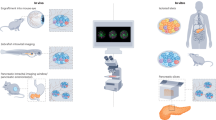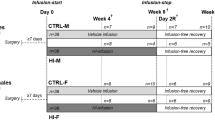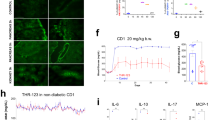Abstract
Summary: There are no prospective studies evaluating residual β-cell function and islet cell antibody status during the first 2 years after the diagnosis of diabetes hi children. We report such a prospective study of 21 insulin-dependent diabetic children. The relationship of residual β-cell function during the 2 years after diagnosis, to age at diagnosis, islet cell antibody (ICA) status, histocompatability status, and exogenous insulin is reported.
Twenty-one children were studied for at least 2 years after the diagnosis of diabetes. Blood was obtained at the time of diagnosis for the determination of ICA and histocompatability status. ICA status was determined 12 months after diagnosis, and again at 24 months if ICA had been detected at 12 months. Residual β-cell function was assessed serially by measuring 24-hr urinary C-peptide. The 24-hr C peptide excretion was expressed relative to 24-hr creatinine excretion. This ratio is termed urinary C peptide excretion (UCP). Islet cell antibodies were measured by indirect immunofluorescence on human O-group pancreas. Fluorescein-labeled anti-C3C was used to determine whether the islet cell antibodies were able to fix complement. A standard NIH micro-lymphocytotoxicity test was used to determine histocompatability status at the A, B, and C loci.
Throughout the entire study period, the UCP of each diabetic was always below the mean of the group of nondiabetic children. For all diabetic children, the UCP decreased during the 24 months after diagnosis. Most children's (14 of 21) UCP had faUen below 0.20 during the 12 months after diagnosis. Twelve of 21 diabetic children were ICA positive at diagnosis. Five had unaltered titers of ICA 12 months later and four had no ICA detectable at 12 months, whereas for three the titer had fallen by at least two dilutions. The magnitude of the UCP 12 months after diagnosis correlated significantly with age at the time of diagnosis (r = 0.557; P < 0.05). Similarly, there was also a significant correlation between the UCP 24 months after diagnosis and age at diagnosis (r = 0.446; P < 0.05). There was no significant difference between insulin dose, expressed as units/kg/day at 12 and 24 months after diagnosis. There was no significant relationship between ICA status and insulin dose at 12 or 24 months. There was no discernible relationship between the evolution of ICA or UCP with histocompatability antigens at the A, B, or C loci.
Speculation: The positive correlation between urinary C peptide and age at diagnosis of diabetes suggests that pancreatic size and potential for subsequent growth might be factors influencing the impact of a diabetogenic insult. For insulin-dependent children, the impact of the diabetogenic process is usually greatest during the 12 months after diagnosis. Potential therapeutic efforts to limit islet cell damage need to be applied early, and it is possible they may not need to be continued much beyond 12 months after diagnosis.
Similar content being viewed by others
Log in or create a free account to read this content
Gain free access to this article, as well as selected content from this journal and more on nature.com
or
Author information
Authors and Affiliations
Rights and permissions
About this article
Cite this article
Crossley, J., James, A., Elliott, R. et al. Residual β-Cell Function and Islet Cell Antibodies in Diabetic Children. Pediatr Res 15, 62–65 (1981). https://doi.org/10.1203/00006450-198101000-00015
Issue date:
DOI: https://doi.org/10.1203/00006450-198101000-00015
Keywords
This article is cited by
-
Fasting plasma C-peptide, glucagon stimulated plasma C-peptide, and urinary C-peptide in relation to clinical type of diabetes
Diabetologia (1989)
-
Factors influencing the magnitude, duration, and rate of fall of B-cell function in Type 1 (insulin-dependent) diabetic children followed for two years from their clinical diagnosis
Diabetologia (1988)
-
Evidence of delayed ?-cell destruction in Type 1 (insulin-dependent) diabetic patients with persisting complement-fixing cytoplasmic islet cell antibodies
Diabetologia (1984)
-
Beta-cell function recovery is not the only factor responsible for remission in type I diabetics: evaluation of C-peptide secretion in diabetic children after first metabolic recompensation and at partial remission phase
Journal of Endocrinological Investigation (1984)
-
Morphometric evidence for a striking B-cell reduction at the clinical onset of type 1 diabetes
Virchows Archiv A Pathological Anatomy and Histopathology (1984)



